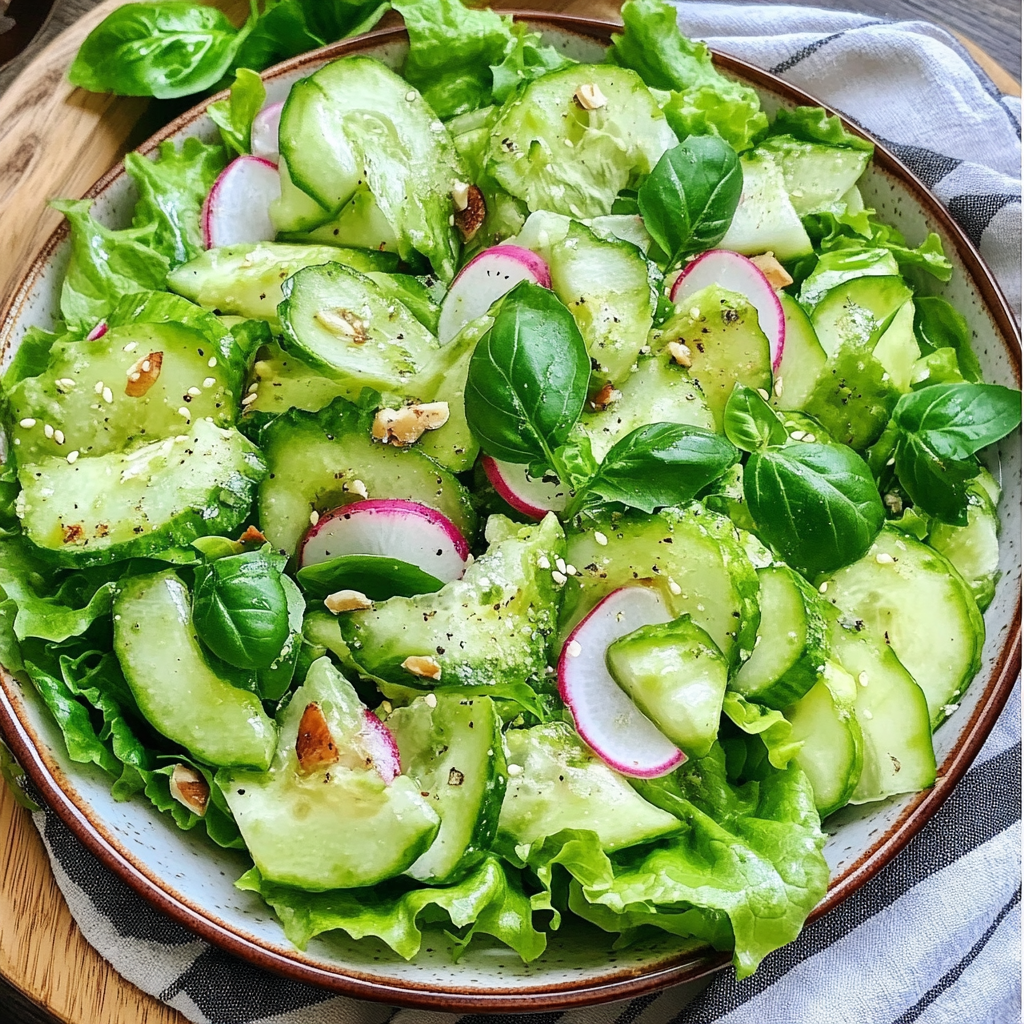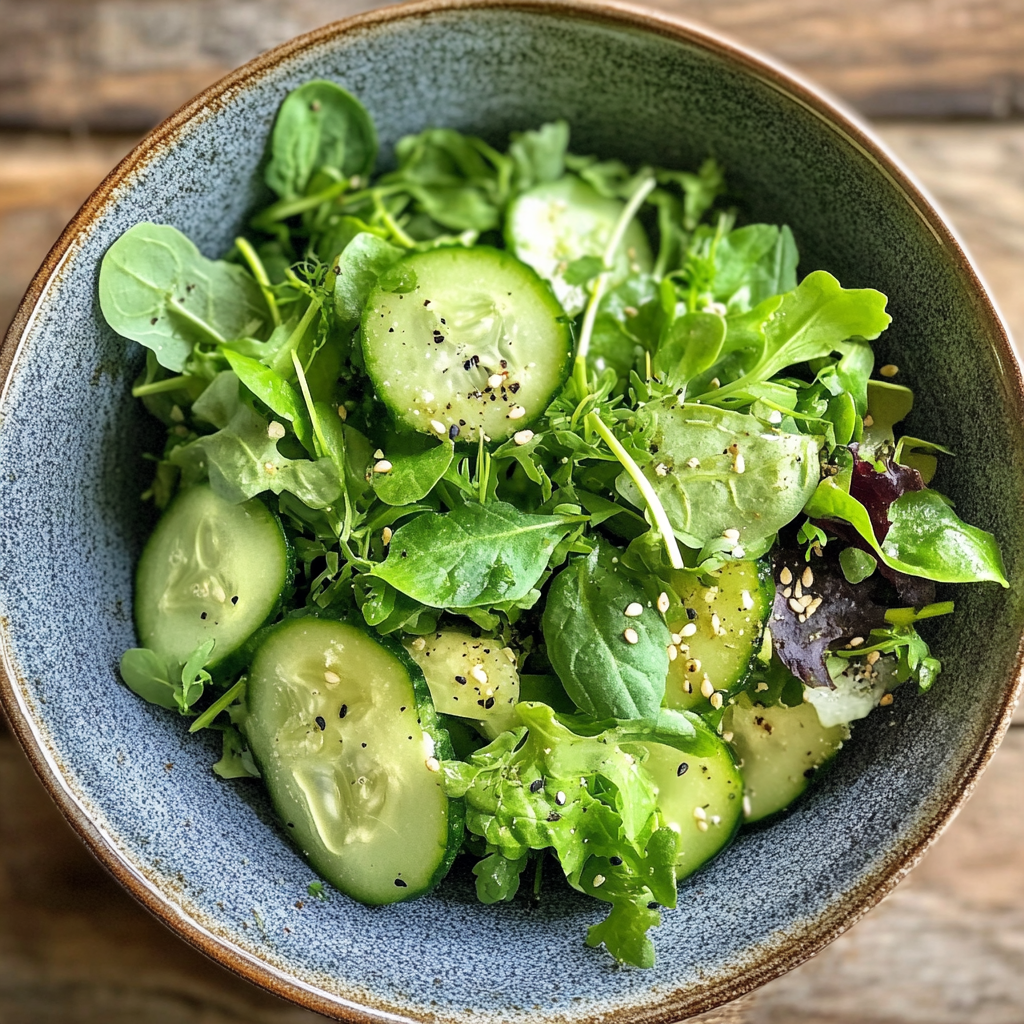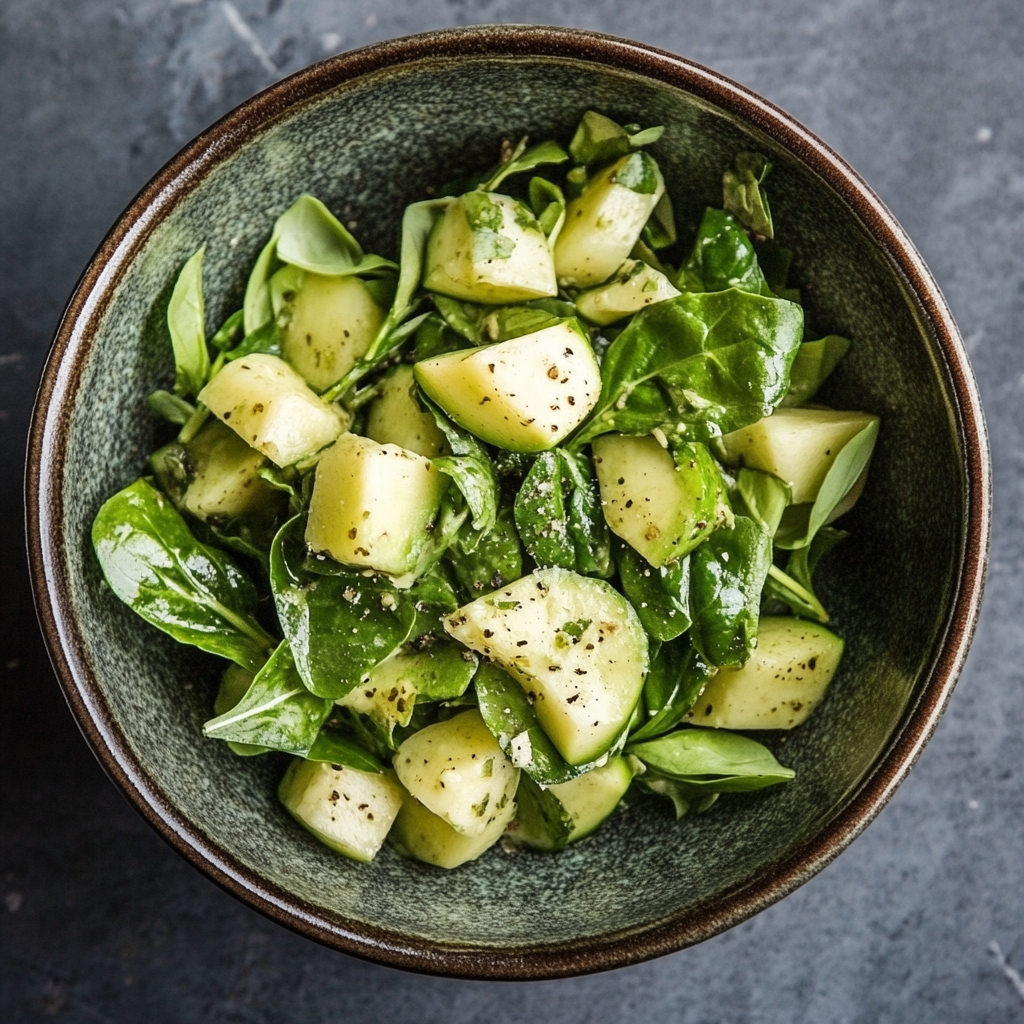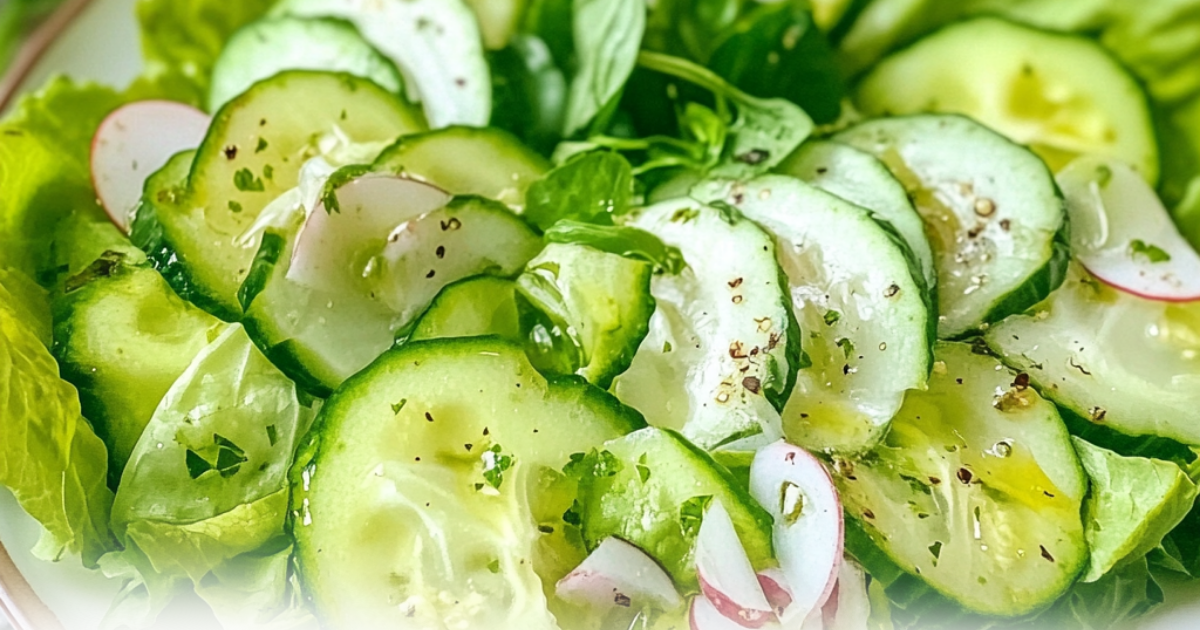Simple, fresh and packed with nutrients Ensalada verde (green salad) is a staple dish that is loved by all cuisines. This article delves into the rich world of this renowned dish, delving into the ingredients, regional variations and benefits for health, and how to make your own fresh salad. By the end, you’ll know exactly what ensalada verde is made of and how to make it part of your meal repertoire.
Table of contents
Introduction to Ensalada Verde
Understanding the Origin of Ensalada Verde
Are you curious about about what Ensalada Verde made of and why it’s so beloved? The essence of this dish is all about simplicity and freshness. Ensalada verde is “green salad,” and its origins go back to the traditional practices of cooking that emphasize fresh local products. It doesn’t matter if it’s, Spanish, Latin American or Mediterranean cuisines, each is unique and has its own twist on this traditional dish.

In the past, salads were coveted because of their nutritious, raw ingredients. As time passed it was made a popular food item with a mix of greens with a hint of color, vegetables, and easy dressings. Each recipe is a reflection of the flavor and the ingredients that are native to its region and is unique and familiar.
Cultural Significance in Various Cuisines
Across cultures, ensalada verde isn’t just a side dish; it’s a reflection of local tastes and agricultural abundance. In Spain, it often includes olives or hard-boiled eggs. In Latin America, like in the Dominican Republic, you’ll find creamy avocado and zesty lime dressing enhancing the flavor profile. These variations keep the core idea intact: a dish rooted in freshness, ease, and adaptability.
So, whether you’re curious about its ingredients or looking to add a healthy, flavorful dish to your menu, ensalada verde is always a winning choice.
Core Ingredients of Ensalada Verde
Leafy Greens: The Base of the Salad
When asking, what is ensalada verde made of, the answer begins with its foundation: leafy greens. These greens are the star of the show, providing both the name and the bulk of the dish. Common choices include lettuce, spinach, and arugula, though kale or even cabbage can make an appearance. The key is to use fresh, crisp greens that serve as the perfect canvas for the rest of the ingredients.

Each type of green brings something special. Lettuce is mild and crunchy, spinach offers a slightly earthy flavor, and arugula adds a peppery kick. Together, they create a harmonious mix that balances flavor and texture.
Common Vegetables and Their Nutritional Benefits
The next layer of ensalada verde is a colorful array of vegetables. From juicy tomatoes and crunchy cucumbers to thinly sliced radishes and sweet bell peppers, these ingredients enhance the salad’s taste and nutritional profile. These veggies are packed with vitamins like A and C, which support immune health, and fiber, which aids digestion.
Toppings: A Guide to Nuts, Seeds, and Add-Ons
To add depth and variety, many versions of Green salad incorporate toppings like nuts, seeds, or cheese. Toasted almonds or sunflower seeds provide crunch, while feta or Parmesan cheese adds a creamy, salty note. These extras allow for customization, making every bowl a personal creation.
Dressing: Traditional Versus Modern Variations
Finally, no ensalada verde is complete without dressing. Traditional recipes often use a simple mix of olive oil, vinegar, and salt. Modern twists, however, may include citrusy vinaigrettes or creamy avocado-based dressings. These dressings tie everything together, ensuring each bite bursts with flavor.
Regional Variations of Ensalada Verde
Dominican Ensalada Verde: Unique Ingredients
In the Dominican Republic, Green salad often includes local favorites like avocado, boiled beets, and lime juice. These ingredients bring a tropical flair to the dish, making it both refreshing and hearty. This variation highlights how local produce can influence even the simplest recipes.

Spanish Influence on Green Salad Recipes
Spain’s take on ensalada verde leans on simplicity. Traditional Spanish green salads often feature olives, boiled eggs, and a drizzle of olive oil. These additions make the salad hearty enough to accompany main courses while still maintaining its lightness.
Fusion Recipes: Modern Twists
In today’s kitchens, ensalada verde has evolved into a dish that embraces global flavors. Fusion recipes may include Asian-inspired sesame dressings, Mexican-style toppings like corn and black beans, or even Middle Eastern spices like sumac. These variations showcase the adaptability of the dish, proving that Green salad is more than just a green salad—it’s a canvas for culinary creativity.
Each region adds its own flair, but at its core, ensalada verde remains a testament to the power of fresh, simple ingredients. Whether you prefer the Dominican style or a classic Spanish version, it’s clear that this dish is endlessly versatile. Explore Cebolla Ensalada Recipe
How to Prepare an Authentic Ensalada Verde
Step-by-Step Guide to Making Ensalada Verde
If you’re wondering what is ensalada verde made of and how to make it, the answer is surprisingly straightforward. Here’s a step-by-step guide to creating a classic version of this refreshing dish:
- Gather Your Ingredients: Start with fresh leafy greens like romaine, arugula, or spinach. Add vegetables such as cucumbers, tomatoes, and radishes for color and crunch. Consider incorporating avocado slices or olives for a creamy or briny touch.
- Prep the Ingredients: Wash and dry the greens thoroughly to ensure a crisp texture. Slice the vegetables evenly to make each bite satisfying and consistent.
- Mix the Dressing: Combine olive oil, vinegar (or lemon juice), a pinch of salt, and pepper. Whisk until emulsified.
- Assemble the Salad: Place the greens in a large bowl, layer the vegetables on top, and drizzle the dressing evenly. Toss gently to coat everything.
- Optional Toppings: Add nuts, seeds, or grated cheese to enhance flavor and texture. These extras are optional but can elevate the salad’s appeal.
Common Mistakes and How to Avoid Them
Making a perfect Green salad is simple, but a few pitfalls can detract from the experience:
- Overdressing the Salad: Too much dressing can overwhelm the fresh flavors. Use sparingly and add more if needed.
- Not Drying the Greens: Wet greens can dilute the dressing and make the salad soggy.
- Skipping Seasoning: Don’t forget salt and pepper; they bring out the natural flavors of the vegetables.
Nutritional Profile and Health Benefits
Vitamin and Mineral Content in Ingredients
One of the best aspects of ensalada verde is its nutritional richness. The leafy greens are packed with vitamins A, C, and K, supporting eye health, immunity, and bone strength. Tomatoes contribute lycopene, a powerful antioxidant, while cucumbers provide hydration and vitamins.
Adding toppings like avocado introduces heart-healthy fats, while nuts or seeds add a dose of protein and essential minerals. With such a diverse ingredient list, this salad is a powerhouse of nutrition.
How It Supports Digestive Health
The fiber content in the vegetables promotes healthy digestion, ensuring your gut stays happy and balanced. This makes Green salad an excellent choice for those seeking to improve their digestive health naturally.
Calorie Information and Dietary Considerations
Ensalada verde is naturally low in calories, making it ideal for weight-conscious individuals. Customizing the salad with high-calorie toppings like cheese or creamy dressings can increase calorie content, so choose ingredients based on your dietary goals.
Tips for Pairing Ensalada Verde with Meals
Perfect Pairings for Ensalada Verde
One of the joys of ensalada verde is its versatility—it can complement a variety of dishes. Pair it with grilled chicken or fish for a balanced and satisfying meal. The light and crisp salad cuts through the richness of proteins, making it a great side for roasted meats or hearty dishes like lasagna. If you prefer a vegetarian option, combine it with a warm bowl of soup or a slice of crusty bread for a comforting yet wholesome combination.
Turning Ensalada Verde into a Main Course
With a few simple additions, you can transform Green salad from a side dish into a filling main course. Adding a protein like grilled shrimp, chickpeas, or boiled eggs elevates its nutritional profile and makes it more substantial. For added texture, toss in some quinoa, roasted sweet potatoes, or even crispy croutons.
Ideal Drinks to Serve Alongside
Pairing beverages with ensalada verde is as simple as the salad itself. Light white wines, such as Sauvignon Blanc, or sparkling water with a splash of lime, perfectly complement its fresh flavors. For non-alcoholic options, herbal iced teas or fresh fruit juices work beautifully.
This adaptability ensures Green salad can fit into any meal, making it a timeless culinary staple.
FAQs About Ensalada Verde
What Are the Key Ingredients in Ensalada Verde?
If you’re still wondering what is ensalada verde made of, the answer is all about fresh simplicity. The core ingredients typically include a base of leafy greens such as lettuce, spinach, or arugula. To this, common additions like tomatoes, cucumbers, and radishes bring color and crunch. Dressings are usually light, with olive oil and vinegar being the traditional choice. Toppings like avocado slices, nuts, or seeds can add extra flavor and texture.
Can Ensalada Verde Be Customized for Special Diets?
Absolutely! Ensalada verde is one of the most versatile dishes you can make. If you’re on a vegan diet, skip the cheese and opt for avocado or roasted nuts for creaminess and crunch. For those following low-carb plans, stick with non-starchy vegetables like cucumbers and leafy greens. Gluten-free? No problem—there’s no bread or pasta in this salad to worry about. Customizing the ingredients makes this dish adaptable for nearly any dietary preference.
What Are Some Tips for Storing Leftovers?
Leftovers can be tricky with ensalada verde, but proper storage keeps it fresh. Store undressed greens and vegetables in an airtight container with a paper towel to absorb moisture. Keep the dressing separate to prevent sogginess. When you’re ready to eat, toss everything together for a fresh, crisp salad.
Conclusion
Why Ensalada Verde Remains a Classic Dish
In the world of salads, ensalada verde stands out for its simplicity, adaptability, and nutritional benefits. Whether you’re serving it as a side or enjoying it as a light main dish, its fresh ingredients and bold flavors make it a go-to option.
Encouraging Experimentation with Ingredients
So, what is ensalada verde made of? The answer is as flexible as your imagination. Start with the basics—greens, veggies, and a light dressing—but don’t be afraid to experiment with unique toppings or flavors. Whether you prefer a Dominican-style version with avocado or a Mediterranean twist with olives and feta, ensalada verde is the perfect canvas for creativity.
With its healthful qualities and universal appeal, this simple green salad proves that great dishes don’t have to be complicated. Try it out, make it your own, and enjoy every fresh, delicious bite!

